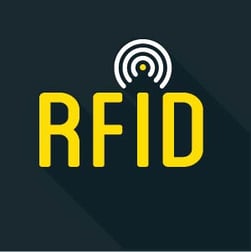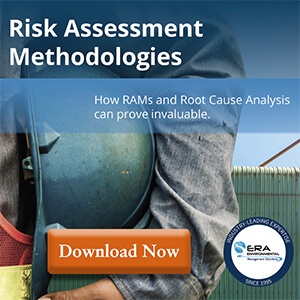 Environmental Health and Safety experts may be aware of the technologies that shape their work today, but what about the technologies that are in development now? Technology has caught up with the intricacies of manufacturing and is becoming standard practice within the industry. Cloud computing has become the norm - making the job of EHS managers easier. However, EHS technology is already looking forward: on the horizon is the Internet of Things (IoT), a fertile ground for new innovations, especially for Health and Safety. Sensors and detection methods aimed at securing dangerous work areas show the importance of these capabilities. IoT Innovations in H&S are found to be safer, less costly, and more productive than human or physical barriers on site.
Environmental Health and Safety experts may be aware of the technologies that shape their work today, but what about the technologies that are in development now? Technology has caught up with the intricacies of manufacturing and is becoming standard practice within the industry. Cloud computing has become the norm - making the job of EHS managers easier. However, EHS technology is already looking forward: on the horizon is the Internet of Things (IoT), a fertile ground for new innovations, especially for Health and Safety. Sensors and detection methods aimed at securing dangerous work areas show the importance of these capabilities. IoT Innovations in H&S are found to be safer, less costly, and more productive than human or physical barriers on site.
Let’s take a look ahead to the future of EHS technology and how you can get in on the cutting edge of EHS innovation.
What is the Internet of Things (IoT)?
IoT is the interconnection of physical devices and everyday objects with the internet. Specifically, it’s a principle focused on “smart” devices that communicate and collect data from the physical environment in order to measure or assist in making decisions. In the EHS industry, IoT innovations include the convergence of common EHS technologies (like real time analytics and automation) with and sensor technology applications to improve operations and compliance. A commonplace example would be continuous emissions monitoring tools which are hooked up to an EHS database via API integration. However, that example is just the tip of the iceberg when it comes to the types of advanced innovation made possible with IoT technology.
The promise of IoT is to move the EHS industry beyond simply to using an organization’s data collected in real time from their equipment and physical environment to render predictive analytics and smart decision making.
Health and Safety Innovations
Innovations in IoT solutions seek to improve health and safety data collection, as well as prevent injuries and predict risks. Predictive analytics in the health and safety industry seek to relieve companies from concerns of work-related incidents and injuries. One of the innovations that engineers are experimenting with involves smart PPE (personal protective equipment). This smart personal protective equipment is often imagined as wearable technology that aims to detect potential hazardous situations and potentially prevent workers from entering dangerous situations. For instance, sensors on your clothing could detect odorless toxic gases and not only alert the employee but automatically trigger a digital incident report. Other potential applications also include location systems, communication systems (smart helmets, earmuffs, and face masks), and even remote management that monitors interactions with hazardous materials. Researchers have even measured and utilized eye tracking for improved outcomes. Using eye tracking glasses, researchers found that certain high-risk jobs require a high level of concentration, and these glasses have been used to identify unique visual needs required for proper training. Eye tracker technology can now provide a sophisticated level of supervision to monitor new workers as a part of the training process—making high risk work procedures safer and more efficient.
Other health and safety applications involve companies innovating solutions for securing dangerous work sites, controlling bicycle lane traffic, managing vehicle fleets, monitoring traffic incident scenes, and more. Using a variety of sensors and detection methods, alerts and data can be sent to safety personnel and managers. Safety personnel can get full visibility to the scene with advanced remote viewing capabilities. Here are a few of the detection methods that are used with safety sensors.
SAMPLE OF DETECTION METHODS
- RFID
- Video cameras

- Motion sensors
- Facial and gender recognition
- License plate recognition
- LIDAR - tripwire/distance measuring
- Seismic
- Windspeed
- Multi-gas detectors, toxic and/or slightly toxic
- Air quality: ozone, particulate matter, carbon monoxide, sulfur dioxide, and nitrous oxide
- Temperature + variances
Vibration Analysis: Take a Virtual Look Inside your Operating Machinery
Maintaining machinery for repairs prevents things from getting worse. The presence or change in the vibration of machinery is typically an indication that something is wrong. Whether there is an issue of balance, lubrication, bearing and gears, vibration analysis can be used to gain deeper insights into a machine’s condition from a single vibration signature.
Vibration analysis can prevent potential disasters, long periods of down-time, safety incidents, secondary damages cause from malfunctions, and lastly a higher cost of repair and lost production. These vibrational analysis tests, carried out while machinery is operating, prevents the need for any downtime while mechanics are planning fixes. Issues can be identified, spare parts ordered, and the maintenance can be scheduled in a way that minimizes disruption or potential disaster to operations.
But where things really get innovative and interesting is when you combine the vibration data from a sensor with your business process management software or compliance software.
Imagine that you are collecting vibration data and were able to automatically send that data to a software which can analyze the changes in vibration to determine if a follow up action is needed. Then the software creates a CAPA task for machine maintenance and assigned that task to a specific employee (who has the proper certification/training), along with a deadline and automated notification that they have a new task.
Essentially, you’d have a hands-free Artificial Intelligence feedback system that lets your machinery talk to your staff and let you know when repairs are needed or something isn’t functioning correctly.
There aren’t many businesses taking advantage of this type of system, but it is currently an achievable reality. All that’s required is a little innovative thinking paired with an innovative system that pairs with your sensor data.
PPE That Assesses and Prevents Danger
.jpg?width=300&name=work%20outdoor%20wear%20safety%20equipment%20at%20utility%20construction%20site%20(1).jpg) Another example of how sensors can be looped into an Artificial Intelligence system is to integrate sensor technology into your PPE (Personal Protective Equipment). This can be as complex or straightforward as you need and as safety demands require.
Another example of how sensors can be looped into an Artificial Intelligence system is to integrate sensor technology into your PPE (Personal Protective Equipment). This can be as complex or straightforward as you need and as safety demands require.
A very simple example would be to apply the same RFID technology that is commonly used in access cards (swipe your employee ID to gain entry) to PPE and your manufacturing equipment. Imagine being able to ensure that your employee can only start up a piece of machinery once they’ve confirmed they are wearing the correct safety gloves by tapping a sewn-in RFID tag.
Now take it one step further by having that data automatically pulled into a health & safety software which can track which employee(s) are using the equipment and when to ensure that only trained and authorized persons are using the equipment. For example, you can start synching up that employee’s RFID tags with records of their completed safety trainings so that they can’t start up equipment that they haven’t been trained on. And when that employee needs training, you would be able to automatically send them an email with a link to the training courses required and a timeline for training – on top of all that, your safety managers would get notifications about all these activities, access attempts, and more. They could even track where and when access attempts are made to ensure employees aren’t sharing PPE to bypass the system.
The limitations on building this type of automated / Artificial Intelligence safety system boil down to two factors: your access to sensor technology and your ability to innovate. Both the software and sensor technology already exist and are already in use across the manufacturing industry – it’s just a matter of having the ability to implement these systems in your own workplace.
So next let’s look at what researchers are saying about the business case for moving to predictive technologies for Health & Safety (like using the Internet of Things)…
Changing How Industries View the New Potential of EHS Analytics
Advanced analytics provide important EHS performance insight and highlight significant opportunities for your business in updating your EHS data. A limited number of data points and lagging indicators can provide some performance metrics, but EHS technologies in the works are seeking to go further.
For example, a research team at Carnegie Mellon University developed leading safety indicator statistical and algorithmic analyses that were able to address workplace incidents with 85% accuracy. In the coming years, executives will to cover a wider spectrum of EHS and risks to improve business practices with IoT innovations. According to Microsoft and Accenture, 89% of oil and gas executives believe they can leverage analytics to improve business practices.
Committing to an EHS data analytics and performance management process can provide significant financial and operational returns. For example, one manufacturer of engine parts implemented a safety observation system that facilitated employee reporting and analysis of unsafe behaviors and conditions that led to incidents and observed a 50% reduction in recordable injuries from 2010 to 2013. Estimates say that by fully optimizing the IoT solutions available, an oil and gas company with $50 billion in annual revenue could increase its profits by nearly $1 billion, according to a Cisco study. Companies interested in continual improvement and growth are seeking to invest in IoT solutions to stay relevant in the future.
Fundamentally, IoT technology like sensors and software platforms with the ability to push/pull data represent the next horizon of innovation and business development. Companies seeking to reduce incidents (for both employees and processes) should look to giving the physical objects of your workplace the ability to communicate to you as well as look for a software system that lets you hear and understand what they are trying to tell you. The results are tangible and measurable in profits and cost reduction.
Final Thoughts
Spreadsheets with siloed systems are archaic for the demands of the EHS industry. Now industry experts and practitioners are focusing on factors beyond regulatory compliance. IoT innovations like predictive analytics look at potential hazards with a level of sophistication that renders better outcomes for managers to improve safety.
Likewise, advanced analytics from IoT can pinpoint trends and statistics to make a stronger business case for business improvements and practices. EHS managers and business executives are moving beyond data outputs to use data to ask and answer questions. Innovations like smart PPE, workplace safety detection, and algorithms empower EHS managers with more information that forces managers to assess and mitigate potential risks.
IoT is making EHS data more useful predicting, preventing, and analyzing for everyone. This trend in the industry is driven by the wholistic standards set out by ISO. This standardized approach encourages managers to take a bird’s eye view of data, patterns, and common occurrences to later leverage analytics to improve business and industry practices.
Software Helping You Drive Stronger Performance
Delivering insights into your EHS performance is key. ERA’s software lets you comprehensively report and use the data already being collected for regulatory reporting. Delivering key insights across all departments can represent a massive benefit.
ERA’s system will give you the ability to deliver across the following sustainability areas:
Total Transparency
Gain a bird’s eye view of your facility’s operations, allowing you to make the decisions you need to implement sustainability measures. This bird’s eye perspective gives you access to complete emissions inventories, as well as giving you a complete view of your facility’s productivity and H&S events. Use predictive analytics with your CEMS data to drive performance.
Protecting Your Triple Bottom Line
ERA's software assists you in hitting your triple bottom line; actively helping you pivot towards the multiple priorities of People Planet Profit. It is this facilitated approach that will allow you to make concrete environmental improvements, like decreasing your carbon footprint, as well as tackling your quarter-by-quarter business concerns.
KPI Tracking and Benchmarking
Deliver authoritative KPI reports through ERA’s solution, which can be set up to automatically deliver reports on all your emissions and utility tracking, including greenhouse gases and VOCs, plus water and waste, utility use, and any other performance metric. The insights provided by ERA’s software actively inform your KPIs, enabling positive sustainability benchmarking with other facilities.
Start Reducing Risk Now
ERA's team of Health & Safety researchers have compiled a short guide about the essentials that go into meaningful risk assessment methodologies, available for free on-demand download. Learn more about the proven methodologies that top performers use to reduce risk and prevent incidents. Click the button below to get your copy now.
This Blog Was Co-Authored By:


Tags:
Incident Management
August 13, 2019

Comments